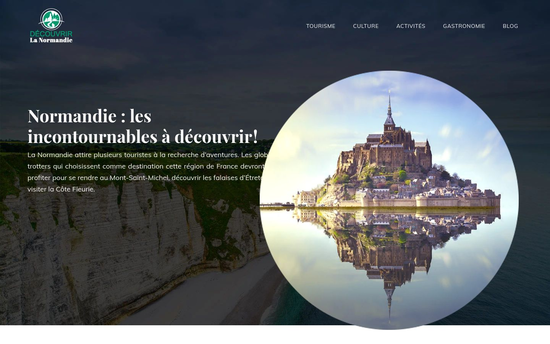Advanced SEO techniques for competitive advantage
SEO traffic

Core Web Vitals optimization
Page experience signals have become critical ranking factors, with loading performance, interactivity, and visual stability metrics directly impacting search positions and user engagement across competitive markets.

Semantic search understanding
Natural language processing algorithms now interpret search intent beyond keywords, requiring content that addresses topical relationships, questions, and contextual meanings rather than simple keyword density.

Local SEO
implementation
Geographically targeted optimization involves structured data markup, consistent nap information, and location-specific content that helps businesses capture high-intent local search traffic with purchase-ready consumers.

Content authority building
Establishing topical authority requires comprehensive content clusters addressing primary topics and related subtopics, creating interconnected information hubs that search engines recognize as authoritative industry resources.
Ranking factor analysis
Digital marketing channels and integration methods
Effective digital marketing requires strategic channel selection based on audience behavior patterns and business objectives. Paid search campaigns deliver immediate visibility for high-intent keywords while organic content builds long-term authority. Social media platforms serve different purposes within the marketing ecosystem, from awareness building on Instagram to professional networking on LinkedIn. Email marketing maintains direct customer relationships through personalized communication. Content marketing establishes expertise and addresses customer questions throughout their journey. The integration of these channels creates consistent messaging while leveraging each platform’s unique strengths.


Performance measurement frameworks
E-commerce platform selection and optimization
E-commerce platform selection requires careful consideration of business requirements including product catalog size, payment processing needs, inventory management capabilities, and scalability potential. Open-source solutions offer flexibility and customization options while saas platforms provide turnkey functionality with lower technical barriers. Product page optimization focuses on compelling imagery, detailed specifications, customer reviews, and clear call-to-action elements that address purchase objections. Checkout optimization reduces abandonment through streamlined processes, guest checkout options, multiple payment methods, and transparent shipping information.
Conversion rate techniques
Web development and design best practices


Mobile-first development
approach
Mobile-first development prioritizes smartphone and tablet experiences during the design process, ensuring essential functionality and content remain accessible and usable regardless of screen size constraints.

Accessibility implementation standards
Web accessibility compliance involves proper heading structure, alternative text for images, keyboard navigation support, and sufficient color contrast ratios to ensure digital content remains usable for all visitors.

Frontend performance
optimization
Frontend optimization techniques include lazy loading images, implementing critical CSS, reducing JavaScript bundle sizes, and leveraging browser caching to create faster, more responsive user experiences.
Content strategy development and implementation
Effective content strategy begins with comprehensive audience research to identify information needs, questions, and pain points throughout the customer journey. Keyword research informs topic selection while competitive analysis reveals content gaps and opportunities. Editorial calendars establish consistent publishing schedules aligned with business objectives and seasonal trends. Content formats should match audience preferences and consumption habits, from in-depth guides and case studies to visual infographics and video tutorials. Distribution planning ensures content reaches target audiences through owned, earned, and paid channels with appropriate messaging for each platform.

Content format selection
Social media strategy and platform selection
Social media strategy development requires platform selection based on audience demographics, content format preferences, and business objectives. LinkedIn serves professional audiences with industry insights and thought leadership content. Instagram and TikTok reach younger demographics through visual storytelling and authentic brand moments. Facebook targets broader demographic ranges with community-building content and targeted advertising. Twitter facilitates real-time engagement and conversation participation. Each platform requires tailored content strategies, posting frequencies, and engagement approaches to maximize effectiveness while maintaining consistent brand messaging across channels.
Engagement optimization tactics
Data analytics and performance measurement

Measurement framework development
Conversion tracking implementation

Goal configuration methods
User behavior analysis

Heatmap interpretation techniques
Attribution model selection
Multi-channel evaluation
Marketing automation and customer journey mapping
Marketing automation platforms enable sophisticated customer journeys through behavior-triggered email sequences, personalized content delivery, and cross-channel messaging coordination. Customer journey mapping identifies key touchpoints and potential friction points throughout the awareness, consideration, decision, and retention phases. Segmentation strategies divide audience groups based on demographics, behaviors, purchase history, and engagement levels to deliver relevant messaging. Personalization extends beyond using customer names to include dynamic content blocks, product recommendations, and tailored offers based on individual preferences and previous interactions with the brand.
Web development for the tourism industry: crafting digital experiences
With a deep understanding of the tourism sector, specialized knowledge is applied to create websites that connect businesses with travelers, enhancing their digital presence. Tailored solutions include seamless booking systems, dynamic content management, and engaging visual experiences to improve user interaction and drive conversions.
